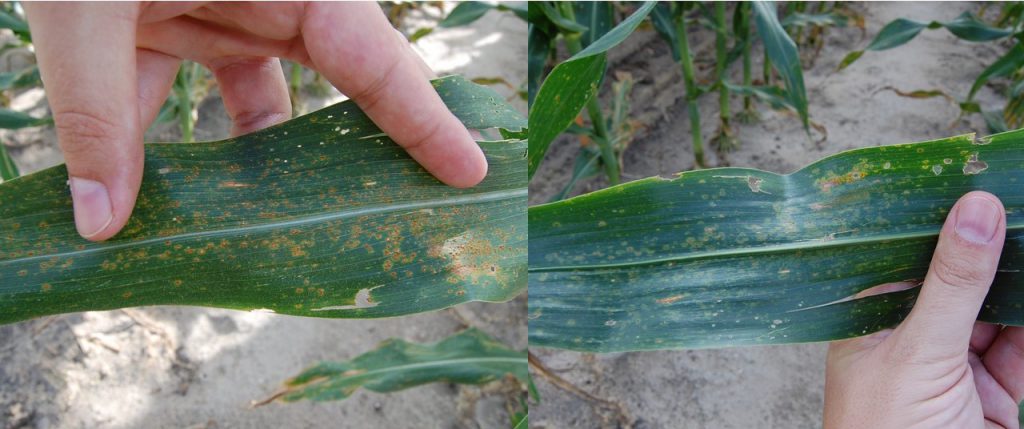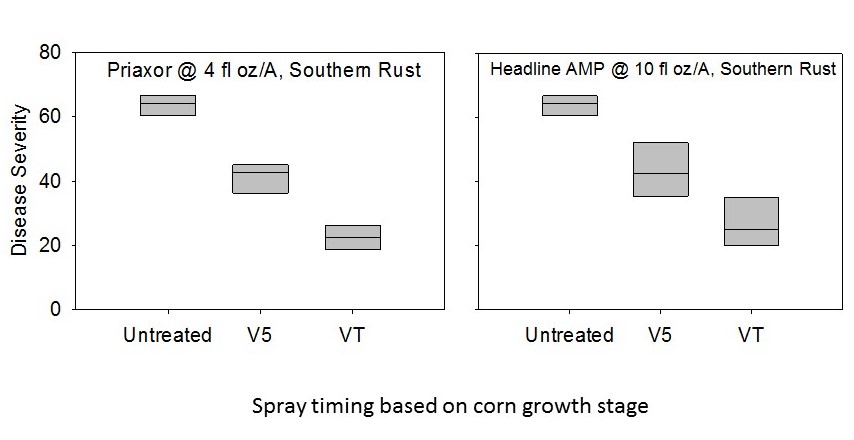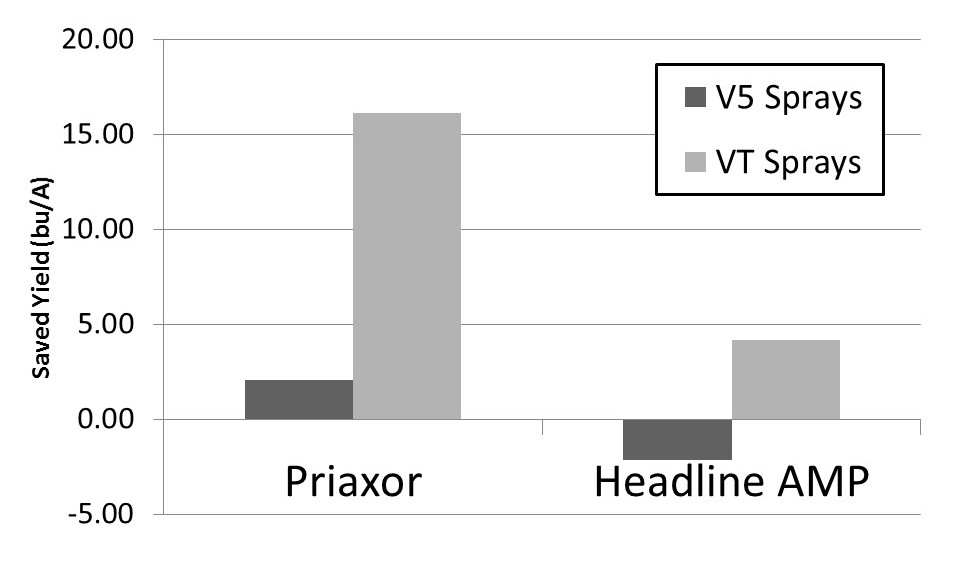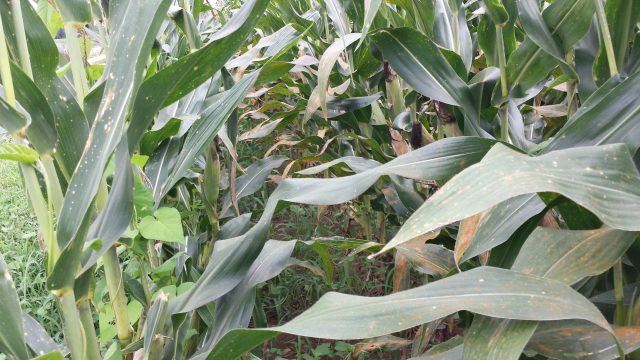By Nicholas Dufault and Maria C. Velez-Climent, UF/IFAS Plant Pathology Department
Recently, southern corn rust (Puccinia polysora) (Figure 1) was identified in Seminole County, Georgia and southern Alabama. With so many cloudy, and rainy days lately many producers have been asking if it would be beneficial to spray a fungicide? Spraying at the right time can be useful in protecting yields, especially with diseases like northern corn leaf blight and southern rust, which spread quickly and cause significant yield losses, if left untreated. So, when is the right time to spray?

Figure 1. Typical southern corn rust signs (left) with orange to light brown, small and densely packed pustules on the surface on the top of the leaf. But, the underside of the leaf surface has yellow flecks and very few, if any, pustules. (Right)
The choice of whether or not to apply a fungicide will vary depending on several key questions. These are:
- What is your yield potential?
- What are the variety’s resistance traits?
- What is the current growth stage of the corn?
- Is disease present in the field or locally?
- Was a fungicide already applied?
It is critical to assess how the potential yield savings from a fungicide application will affect your budget, and if resistant traits are present for the disease of interest. Budget tools, such as UGA’s corn budget, can be very helpful in this decision process. Fungicides can usually save between 5 and 10 bushels per acre, but these values can vary depending on the amount of disease present in the field. Thus, it will be critical to evaluate a range of yield savings and the impacts they will have on the overall returns.
Growth stage is also important when considering the benefits of a fungicide application. An application in the V-stages can reduce disease severity in corn (Figure 2), but often does not lead to significant yield increases (Figure 3). In general, fungicide applications around VT (Tassel) to R2 (Blister) provide the best yield savings. There are situations where sprays outside these growth stages can be beneficial and further information about growth stage timing can be found at your local extension office.

Figure 2. Box plots of disease severity ratings for southern corn rust with fungicides sprays at V5 and VT for the products indicated. The variety was Dekalb DKC66-97.

Figure 3. Yield savings in bu/A for Priaxor (4 fl oz/A) and Headline AMP (10 fl oz/A) when compared to the untreated control for single sprays at V5 and VT. Southern corn rust was the primary disease present with severity values presented in Figure 2.
The timing of the first fungicide application and deciding whether or not to apply a second application requires gathering some information about the disease. If the disease is present in the field or locally (e.g. neighboring county) and environmental conditions are conducive for disease development, a fungicide spray has a high probability of saving corn yields. Monitoring corn diseases should be primarily done through scouting, however, there are multiple resources available to help with corn disease monitoring (e.g. blogs, extension newsletter and Twitter). The decision of a second fungicide application depends on when the first application was applied, the growth stage of the crop and if conditions remain conducive for disease. Basically, it requires going through all the questions again, and assessing the impact and duration of protection from the first fungicide. About two weeks after the first application is a rough time estimate to begin considering a second application and evaluating the impacts of a fungicide spray.
The final choice to make is which product to use. Luckily, there are many quality products available for corn diseases and this choice depends on which and how many diseases are present. For general insights on product efficacy, the fungicide efficacy guide provided by the Corn Disease Working Group is a great resource. Corn fungicide application decisions can be difficult to make. If the answers to the questions above indicate a high risk for disease, it is important not to hesitate when making a decision to spray fungicides, especially since southern corn rust and northern corn leaf blight can spread quickly in the right situations.
- Southern Rust Confirmed in the Florida Panhandle – June 2025 - June 6, 2025
- Stay Ahead of Disease with the Spore Report: A New Tool to Assist with Potato and Watermelon Management - April 11, 2025
- 2024 End-of-Season Florida Peanut Disease Notes - October 11, 2024

